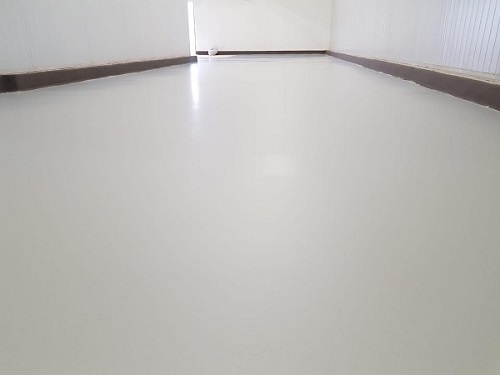4 THINGS YOU SHOULD KNOW BEFORE STARTING A COLD ROOM PROJECT
Cold rooms and walk-in coolers are used in commercial and industrial facilities to store, cool, or freeze perishable food and beverage products. The right flooring system is a critical factor when it comes to the success of cold room construction. Not only does your cold storage floor have to stand up to a harsh environment and support sanitary conditions, but there are specific ways it needs to be installed as well. Here are the questions you should be asking when it comes to your cold room project:

1. Are organics present in this space?
Food products and beverages can leak organic acids onto your floor. These acids can break down an epoxy flooring system, whereas a polyurethane flooring system that is resistant to acids and chemicals will be a better investment because it will last.
2. How will the space be cleaned?
If you are operating a commercial kitchen that utilizes a walk-in cooler or freezer and you clean using a mop, an epoxy flooring system may be sufficient. However, for industrial food manufacturers with cold rooms that require hot water washdowns, a urethane flooring system will be necessary. Hot water washdowns can involve applying water as hot as 180°F to a floor as cold as 32°F. This extreme process causes thermal shock. Only urethane mortar systems can withstand such severe changes in temperature without breaking down. In addition, to keep walls clean and sanitary, a seamless, urethane wall glaze that can stand up to washdowns, organic acids, abrasion, and low temperatures is recommended.
3. Are there temperature requirements that must be met during the floor’s installation?
In some large food manufacturing environments, the entire facility is set to a low temperature. The operating facility cannot afford to raise the temperature of the environment for a cold room or cooler flooring installation. Polyurethane flooring system installations require temperatures to be at or above 40°F and epoxy flooring systems require an even higher temperature -- at or above 60°F. In such cases, to ensure the floor is properly installed and will not fail, a methyl methacrylate (MMA) flooring system is necessary as it can be installed at temperatures below 40°F.
4. What kind of substrate does the environment have?
Most large build situations have concrete as a substrate, however smaller walk-in coolers may be pre-cast with a metal substrate. In such cases it is important for the flooring to have the right formulation to bond to the metal. Metal can move due to temperature changes or bend from weight that is exerted upon it. Cold storage environments require experts in these types of flooring installations to ensure it will be completed the right way with the right materials the first time. A flexible bonding layer will be required to ensure the system does not crack. These harsh environments require meticulous attention to detail, from cutting chases where the floor transitions and properly honoring joints to prevent cracking and buckling, to installing cove bases to prevent moisture from building up behind the flooring system.
The construction of cold room environments requires knowledgeable professionals, top quality products, and expert installers. Stonhard manufactures and installs urethane, epoxy, and MMA flooring systems for industrial and commercial environments, specializing in food and beverage facilities, with nearly a century of experience in delivering seamless floor and wall solutions.
When planning your cold room project, contact your local Stonhard Territory Manager, for a free site evaluation, or call 800.257.7953.